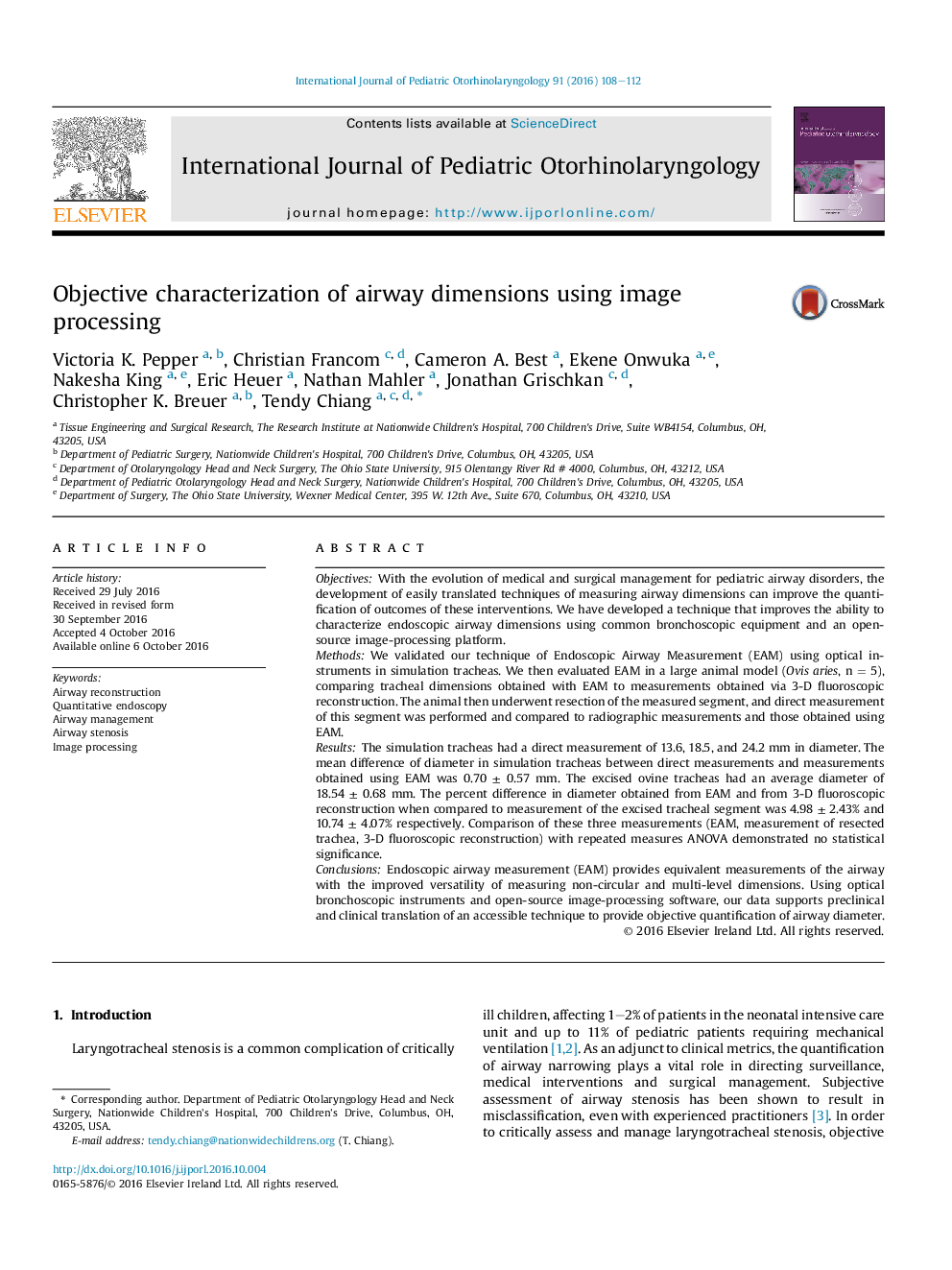| Article ID | Journal | Published Year | Pages | File Type |
|---|---|---|---|---|
| 6212961 | International Journal of Pediatric Otorhinolaryngology | 2016 | 5 Pages |
ObjectivesWith the evolution of medical and surgical management for pediatric airway disorders, the development of easily translated techniques of measuring airway dimensions can improve the quantification of outcomes of these interventions. We have developed a technique that improves the ability to characterize endoscopic airway dimensions using common bronchoscopic equipment and an open-source image-processing platform.MethodsWe validated our technique of Endoscopic Airway Measurement (EAM) using optical instruments in simulation tracheas. We then evaluated EAM in a large animal model (Ovis aries, n = 5), comparing tracheal dimensions obtained with EAM to measurements obtained via 3-D fluoroscopic reconstruction. The animal then underwent resection of the measured segment, and direct measurement of this segment was performed and compared to radiographic measurements and those obtained using EAM.ResultsThe simulation tracheas had a direct measurement of 13.6, 18.5, and 24.2 mm in diameter. The mean difference of diameter in simulation tracheas between direct measurements and measurements obtained using EAM was 0.70 ± 0.57 mm. The excised ovine tracheas had an average diameter of 18.54 ± 0.68 mm. The percent difference in diameter obtained from EAM and from 3-D fluoroscopic reconstruction when compared to measurement of the excised tracheal segment was 4.98 ± 2.43% and 10.74 ± 4.07% respectively. Comparison of these three measurements (EAM, measurement of resected trachea, 3-D fluoroscopic reconstruction) with repeated measures ANOVA demonstrated no statistical significance.ConclusionsEndoscopic airway measurement (EAM) provides equivalent measurements of the airway with the improved versatility of measuring non-circular and multi-level dimensions. Using optical bronchoscopic instruments and open-source image-processing software, our data supports preclinical and clinical translation of an accessible technique to provide objective quantification of airway diameter.
